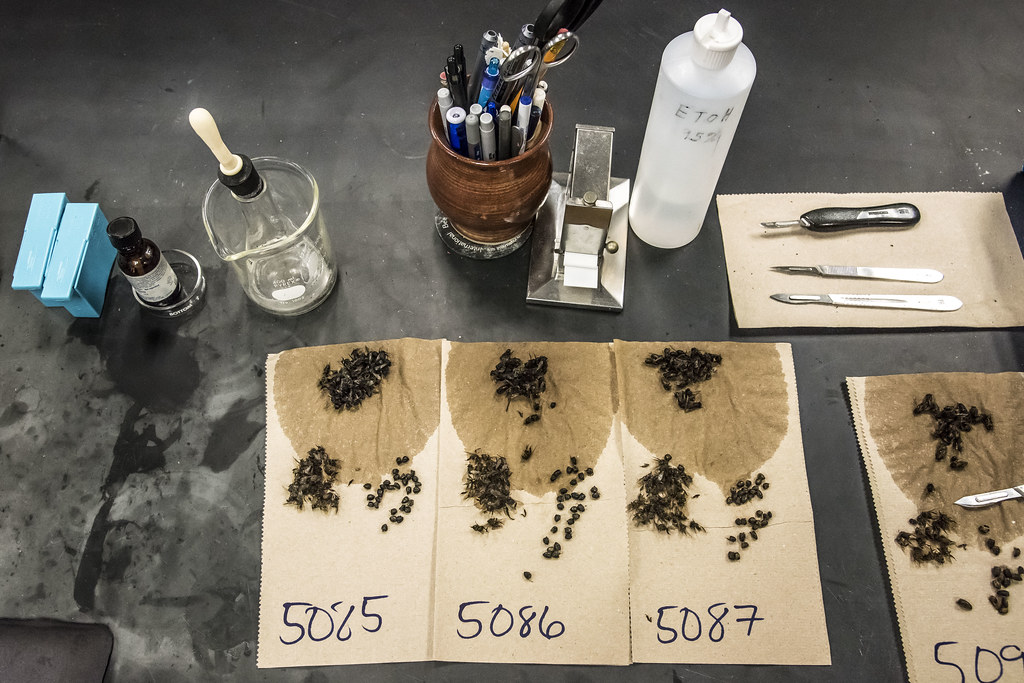
Here you can view the plants that have similar pH and Ec values and can therefore, at least in this respect, be planted together in an aqua or hydroponic system. Also pay attention to the temperature.
What are the nutrient requirements for certain plants? This list shows the nutrient concentration preferred by each plant. Note the differences within the subspecies/breeding . Please remember: there are 23,000 varieties of tomatoes - of course these vary in terms of preferred temperatures as well as Ec and pH values! The fine-tuning of the nutrient composition is not even mentioned here. More details about the list at the end of the same.
|
You can also download the list of pH and Ec values here. This list should only serve as an orientation and does not save you from a detailed check of your cultivation. Don't forget that even within the same subspecies the differences can be very big. And of course we do not take any responsibility for the information given. We also offer a precise determination of the nutrient requirements for your plants and can thus provide you with a nutrient roadmap. Download as:
The Ec valueWe measure the salt concentration with an Ec, TDS or PPM measuring device. The nutrients dissolve in the water and provide a value measured by the EC or PPM measuring device that shows you how much fertilizer is contained in the nutrient liquid and therefore how much fertilizer needs to be added if necessary.
As soon as the Ec value drops, you need to fertilize accordingly. You can measure, check and control this every minute with one of our systems or by hand with an Ec pH measuring device . The advantage of the control system is obvious: with minimal steps in the supply of the nutrient solution through a micropump, you can always maintain the exact range that is optimal for the plant.
If the Ec value increases, you simply need to add more water to the nutrient solution. A rising Ec value can have many reasons: contamination from the plants themselves, water that is too rich in minerals, accidental overdose, etc.
The pH valueIf the pH value falls below the recommended value (towards acidic / pH 1), you can use a basic solution to correct the pH value back towards basic (pH 14).
If the pH value rises above the recommended value (towards basic / pH 14), you can correct the pH value back towards acidic (pH 1) with an acidic solution. You can measure, check and control this every minute with one of our systems - but we have already mentioned that.
According to the old school wisdom: Acid + alkali equals salt + water, you can use anything from household vinegar (acid) to baking soda/soda (base) to correct the pH in one direction or the other. But: as mentioned, salts are formed. These of course change the Ec value. At this point in the process you have to observe the plants closely in order to detect any deficiency symptoms in good time.
If you only have 50 or 100 plants, a complete replacement of the nutrient solution is always the safe way. As a guide: 100 tomato plants consume around 5 liters of fertilizer concentrate in three months in an outdoor area with around 150 liters of water/nutrient solution (central Portugal, mid-summer). In large systems, it is preferred to analyze the current nutrient solution in order to simply supplement the missing components in a targeted manner.
The pH and electrical conductivity values ( Ec, TDM, PPM values) given here are guidelines only. Your specific requirements for plant cultivation vary depending on the subspecies of the plant, growth phase and many other factors (UV value, brightness, lighting duration, genus/breeding/subspecies, temperature, etc.). For hydroponics use inorganic fertilizer, for soil use organic. The organic fertilizer requires microorganisms to break down the nutrients. These microorganisms are missing in hydroponics.
The values mentioned here are only for hydroponic plants (ground plants sometimes differ greatly). Almost all plants tolerate slight over or under concentrations in soil. The plant “consumes” different amounts of the individual substances (nutrients). If the nutrient solution is not optimally composed, deficiency symptoms can quickly occur. With general nutrient solutions or fertilizer mixtures, the entire nutrient solution usually needs to be replaced every three to four weeks. An analysis of these small quantities is in any case more expensive than the amount of fertilizer you pay instead.
The temperatureTemperature greatly influences the Ec and pH of the nutrient solution. Most pH meters therefore have automatic temperature compensation. Some EC and pH meters come with a bag containing a calibration liquid that can be used to calibrate the meter. Depending on the quality of the sensors used, this should be done every few weeks. We strongly recommend that hobbyists join one or more hydroponic community forums.
Below are some articles to further delve into the subject...
Context: |



Add Comment